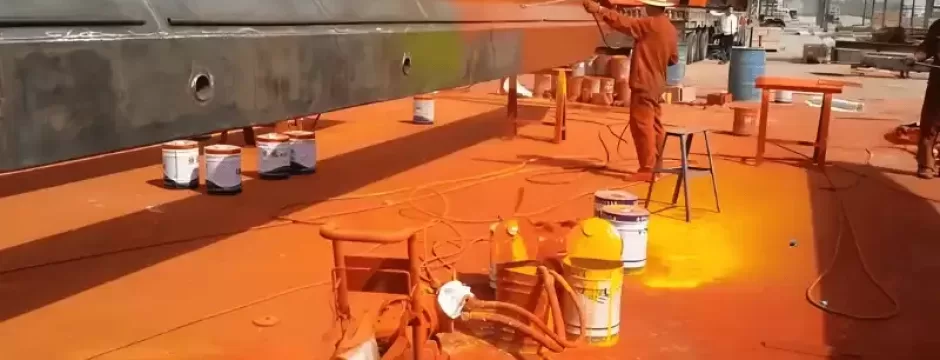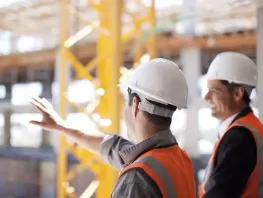
How Often Should Industrial Facilities Repaint Structural Steel or Equipment?
Posted Aug 18, 2025 by Dave Scaturro

If you’ve ever walked through an older plant and spotted rust creeping along a steel beam—or worse, flaking paint raining down from an overhead crane—you know paint isn’t just about appearances. For industrial facilities, repainting structural steel and equipment is about safety, compliance, and protecting assets that cost a fortune to replace.
The tricky part? There’s no one-size-fits-all timeline. How often you need to repaint depends on what you’re working with, where it’s located, and what it’s up against every day.
Environmental Exposure Changes Everything
If your steel beams live inside a climate-controlled warehouse in inland New Jersey, they’ve got a much easier life than equipment parked outside at a port or refinery.
Mild indoor environment: 7–10 years between major repaint cycles
Heavy industrial indoor (chemicals, moisture): 5–7 years
Outdoor inland: 5–7 years
Outdoor coastal: 3–5 years (sometimes sooner if not maintained)
Salt, humidity, and temperature swings eat away at protective coatings faster than you think. In coastal NJ, we’ve seen untreated steel start to pit in under a year.
Equipment vs. Structural Steel
Structural steel—think columns, trusses, mezzanines—usually lasts longer between coats because it doesn’t move. Equipment? Whole different story. Forklifts, cranes, conveyors, and tanks take more abuse from abrasion, chemicals, and handling. That often means touch-ups every 2–3 years to stay ahead of wear and tear.
It’s Not Just About the Calendar—It’s About Condition
If you wait until paint is peeling or rust is visible, you’ve already lost valuable protection. That’s why smart facility managers build annual inspections into their maintenance schedule.
A quick visual check can reveal:
Bubbling or blistering paint (moisture underneath)
Fading or chalking (UV damage)
Rust spots or streaks (coating failure)
Catching these early lets you do targeted touch-ups instead of a full-scale repaint—saving both money and downtime.
Prep and Coating Choice Matter
The better the surface prep and coating system, the longer your paint job will last. At Alpine Painting, we don’t just “clean and coat.” We blast, grind, or wash to bare metal when needed, then apply primers and topcoats designed for your specific environment—epoxies for chemical resistance, polyurethanes for UV, zinc-rich primers for maximum corrosion defense.
A Real-World Example
We repainted a set of outdoor storage tanks for a chemical plant in Middlesex County back in 2015. The old paint was barely holding on after four years. We stripped them down, used a zinc-rich primer, epoxy mid-coat, and polyurethane finish. They’ve gone eight years with only minor touch-ups—because the right system and prep make all the difference.
Bottom Line
There’s no magic number of years that applies to every industrial facility. But if you’re inspecting annually, using the right coatings, and not waiting until the damage is obvious, you’ll extend the life of your steel and equipment—and keep OSHA and your insurance carrier happy.
Need an inspection or repaint plan for your facility?
Contact Alpine Painting & Sandblasting Contractors today and let’s put together a maintenance schedule that protects your investment and keeps your operation running strong.









